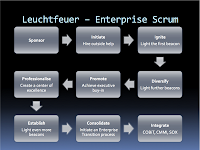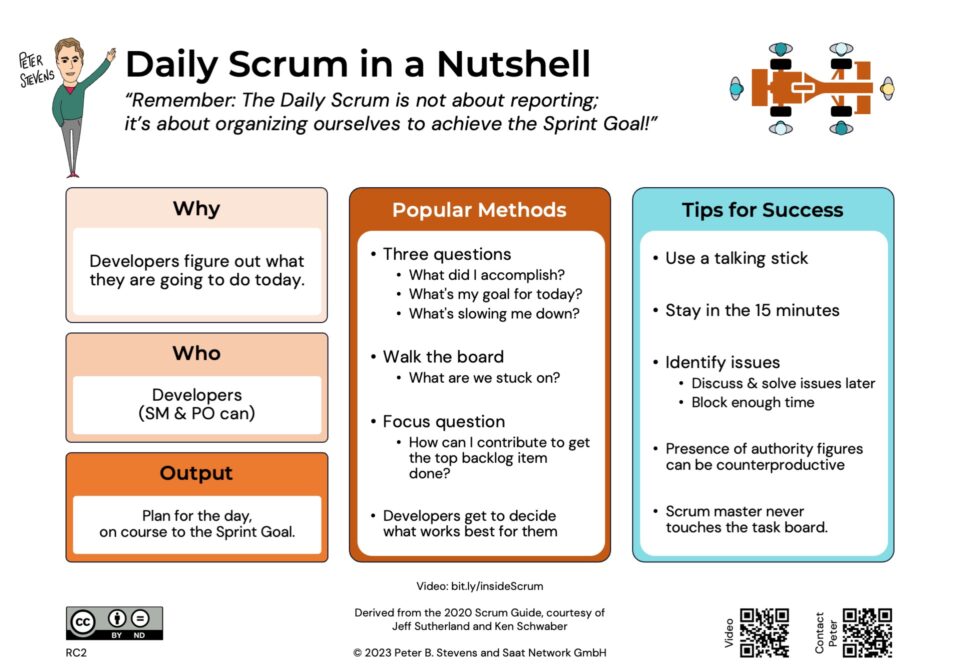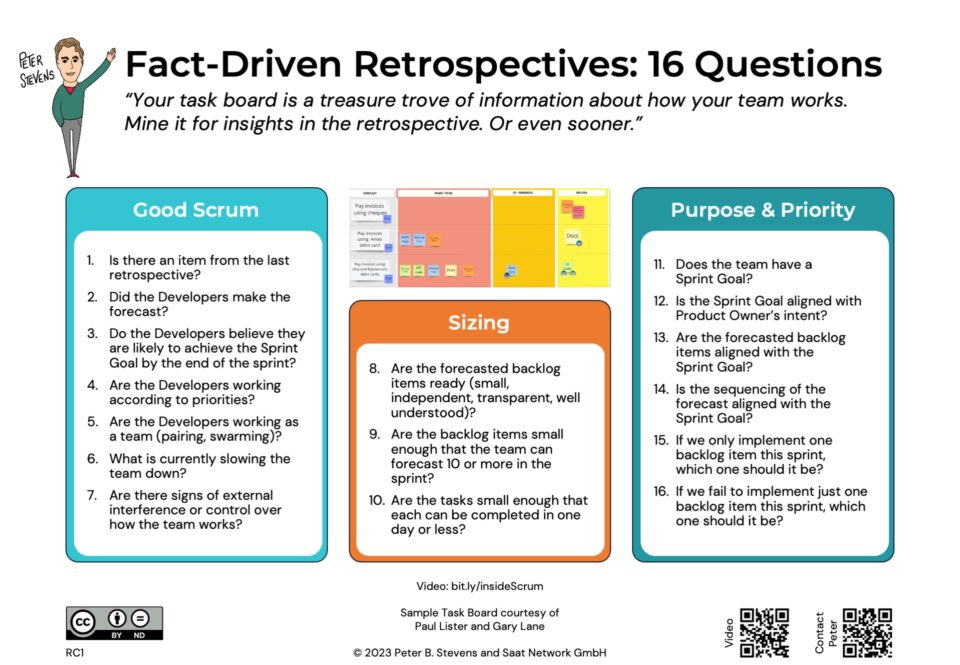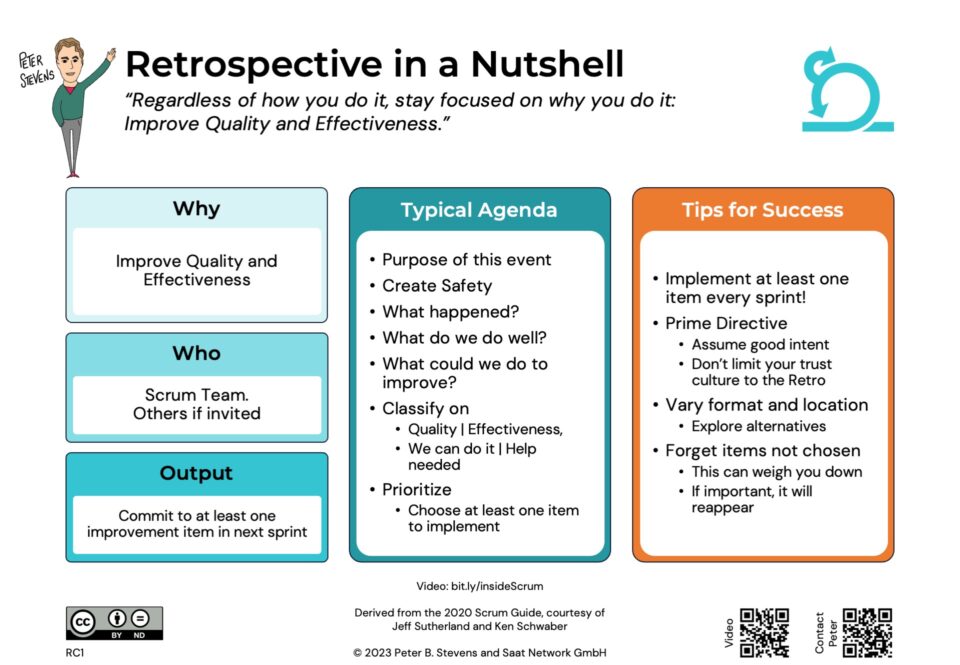Stars out, dzone in
13-08-2008Jugs: Intro to Agile and Scrum
25-08-2008 Besides successful start-ups, at least three “name brand” European companies have committed to Scrum for their software development: Nokia (source of the Nokia test), SAP, and Allianz Deutschland (Germany).
Besides successful start-ups, at least three “name brand” European companies have committed to Scrum for their software development: Nokia (source of the Nokia test), SAP, and Allianz Deutschland (Germany).
At the most recent gathering of the German Scrum User Group, Simon Roberts presented how Allianz committed to and introduced Scrum. Simon described Project “Leuchtfeuer” – transitioning the Enterprise to Scrum via a series of lighting beacons.
His metaphor reminds me of the airway lighting beacons used in the 1920s and 30s. At night, pilots flew from light beacon to light beacon, enabling navigation over long distances for the first time. Even today, approach light beacons play a critical role in the precision approaches which allow aircraft to land in bad weather.
Simon’s “airway” has nine waypoints:
- Sponsor – don’t leave home without one.
- Initiate – get outside help
- Ignite – light the first beacon with a pilot project
- Diversify – light more beacons with additional projects
- Promote – do good and talk about it
- Professionalize – training, training and a center of excellence
- Establish – light still more beacons
- Consolidate – align with corporate strategy
- Integrate – Corporate Governance, SOX, CMMI etc.
Sponsor – Having support from a senior executive is critical. Successful change is a combination of top down and bottom up. Bottom up alone isn’t enough, which means that Stealth Scrum won’t work. Top down (the classic consultant driven approach) has its limitations as well; the successful transition requires both top level and grass roots support.
Initiate – Corporations will usually need outside help. Reading a book without practical experience isn’t enough. The need is not so much for classical consulting, but rather for coaching of the teams and management as they build experience and overcome problems using Scrum.
Ignition – The first project. Here top-down meets bottom up. The first project should “a real project, not too easy, not too critical”. Lots of coaching will be needed, especially during the first few sprints. Successes are the basis of support, both grass-roots and top level.
Diversify – After initial success, add more projects. Do different types of projects. If the first project was a web application, try a mainframe project. Ensure that enough coaching is available for the new teams.
Promote – Internally and externally. Top Management needs to see results and give buy in. Allianz competed for and won this year’s IT Strategy Prize from CIO Magazine, and Agile was part of the application. Simon recommended the patterns of Fearless Change: Champion Skeptic, Corporate Angel, Corridor Politics… and many open informational events.
Professionalize – Scrum Masters and Product Owners need the corresponding training (CSM, CSPO). Eventually the company should establish a Scrum Center which serves as a resource for helping Teams and Product Owners do Scrum better.
Establish – work with Customers, Project Management Office, Corporate Education, etc. to make Scrum an offical option or even the preferred open for software development management.
Consolidate – at this point, Scrum has demonstrated successes at the base and support from top management. If the strategy has been emergent, now is the time to consider an Enterprise Transistion Team which assures defines the strategy and assures alignment of IT operations with business strategy.
Integrate – The enterprise is still has Laws, Regulations and Standards, e.g. Corporate Governance, Compliance, Standards and Frameworks that it needs to comply with. Scrum can be integrated into all of them (e.g. SOX, CMMI, ITIL). Don’t worry about it, but don’t start too soon either.
A fascinating talk about a practical introduction of Scrum into a very large organization. You can download his slides at ScrumCenter.org.
I would have liked to hear a bit about the business results of this program. Has the company become more innovative? What impact has it had on the productivity, employee retention, effectiveness, corporate results? Allianz Deutschland is making a substantial change in their corporate processes. Is it worth it?
Simon and his partner Christoph Mathis have agreed to talk about Scrum in the Enterprise at the Scrum Breakfast in Zurich. This promises to be an interesting discussion! December 3, 2008 — mark your calendars! And if you want an invitation, let me know!




